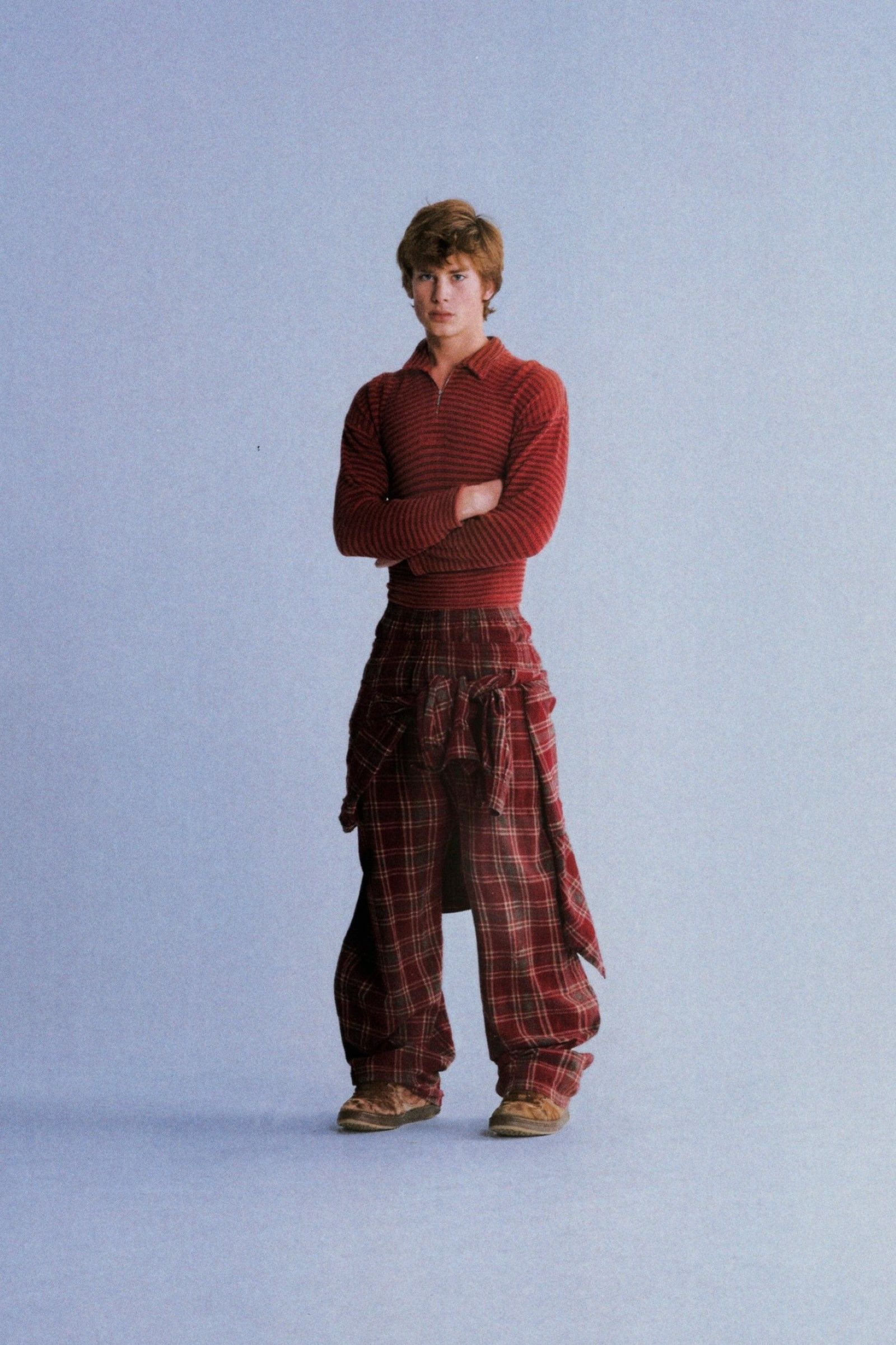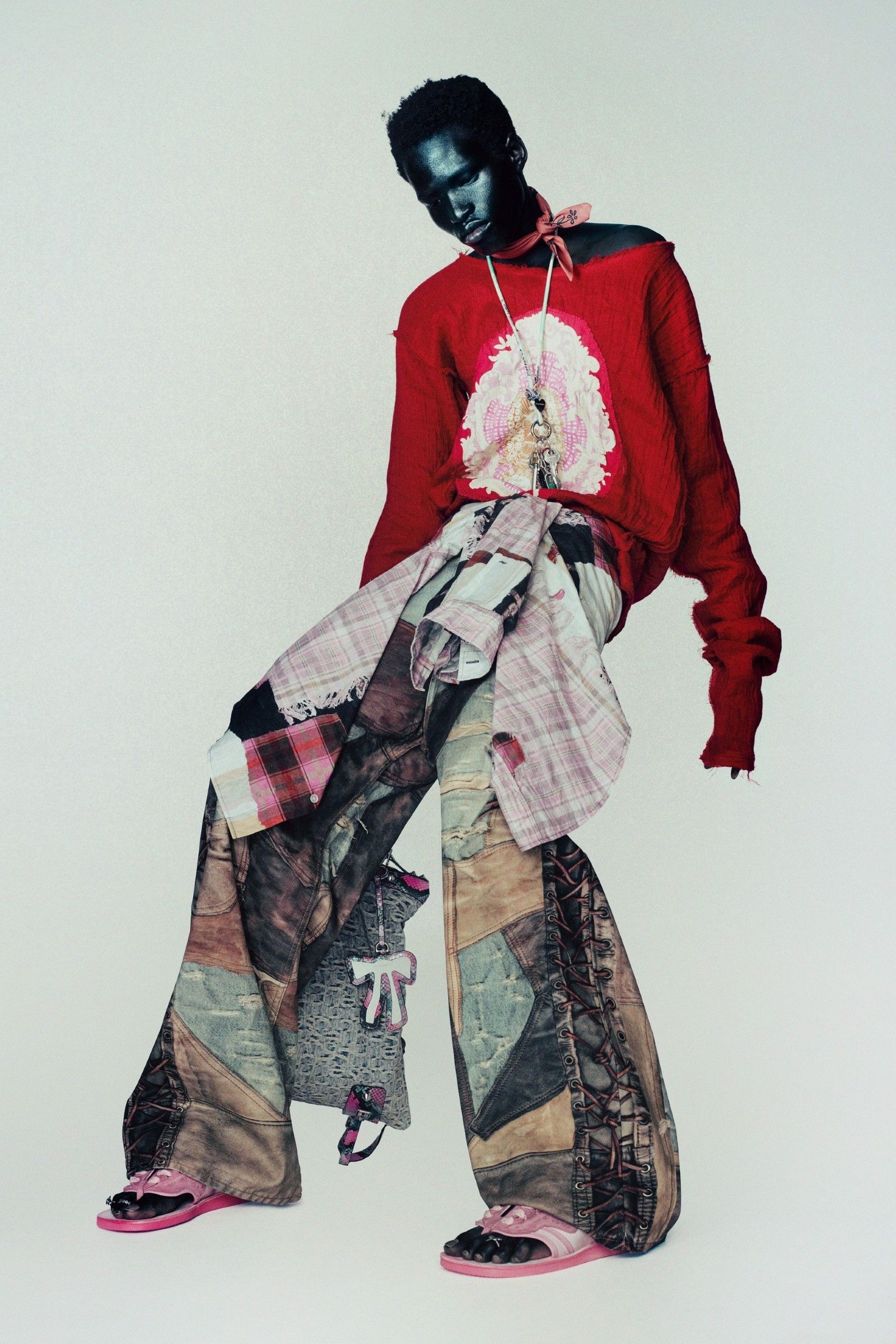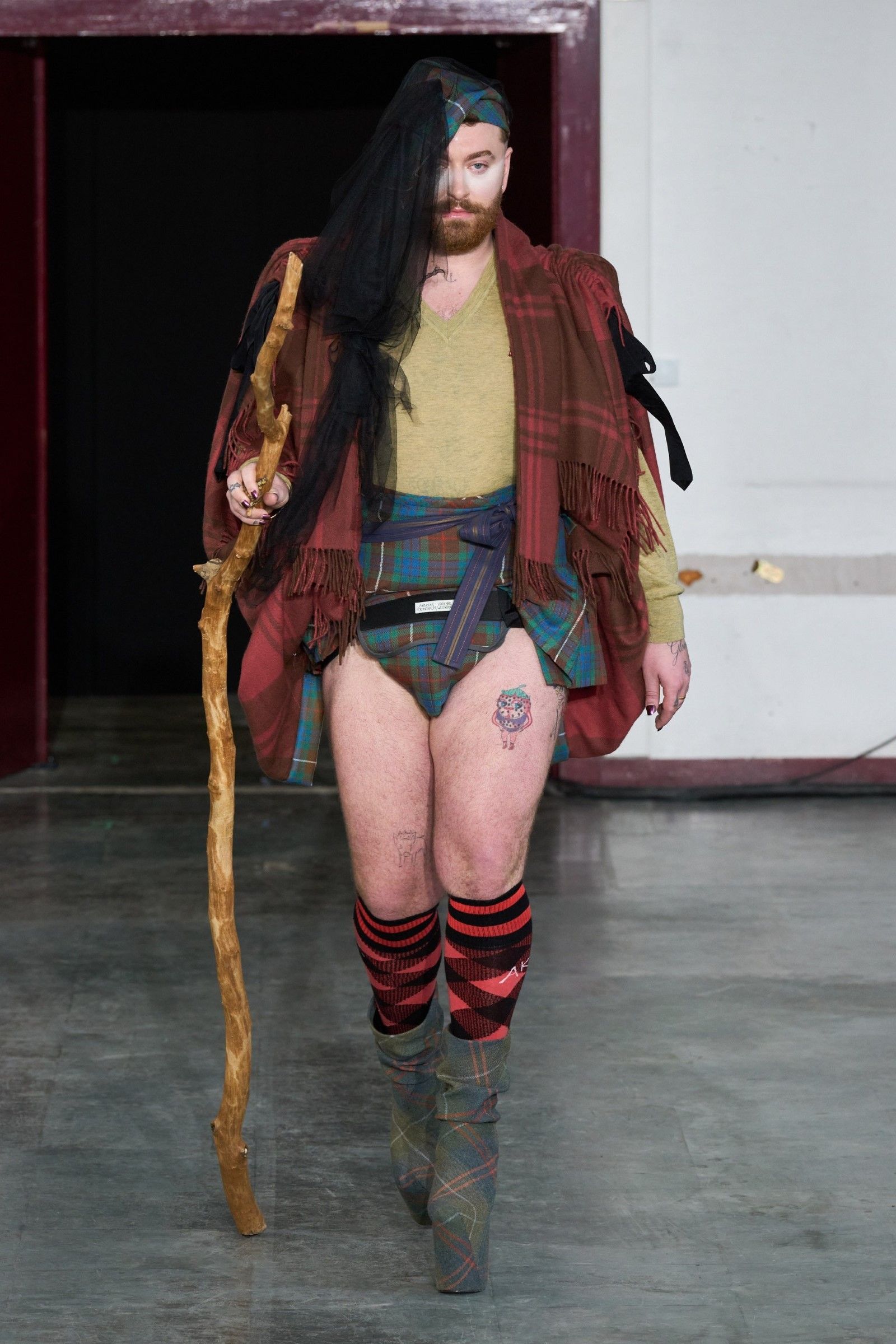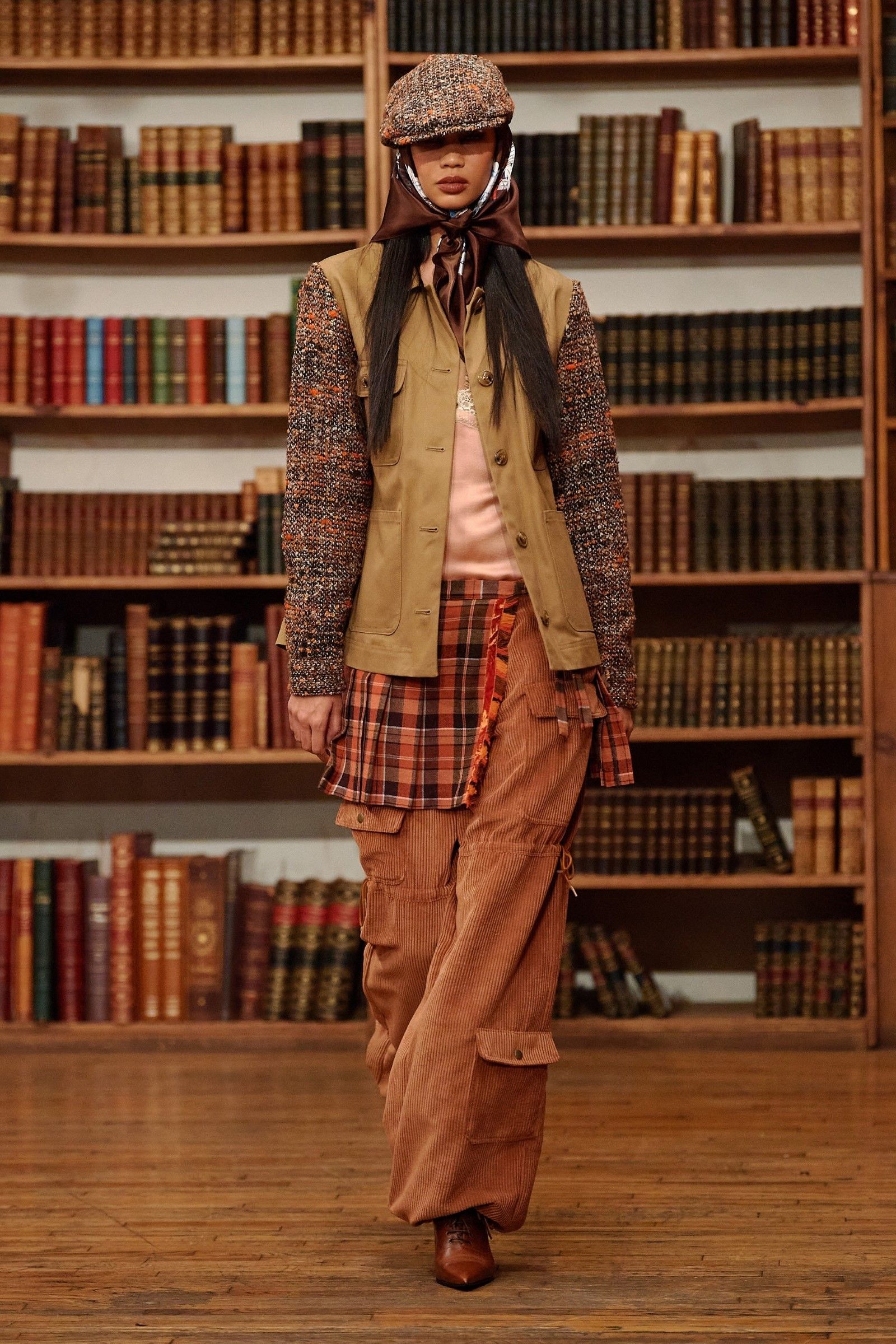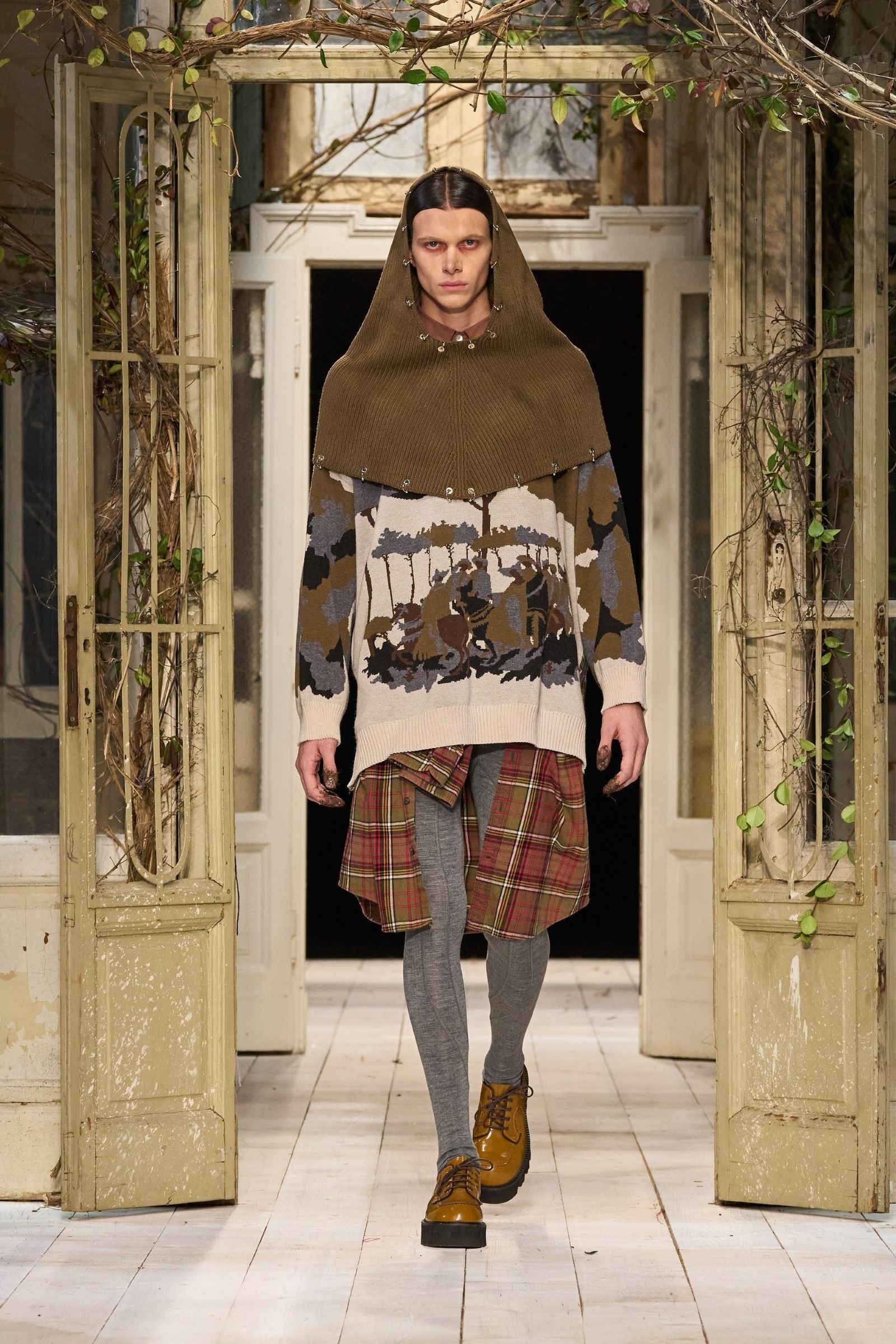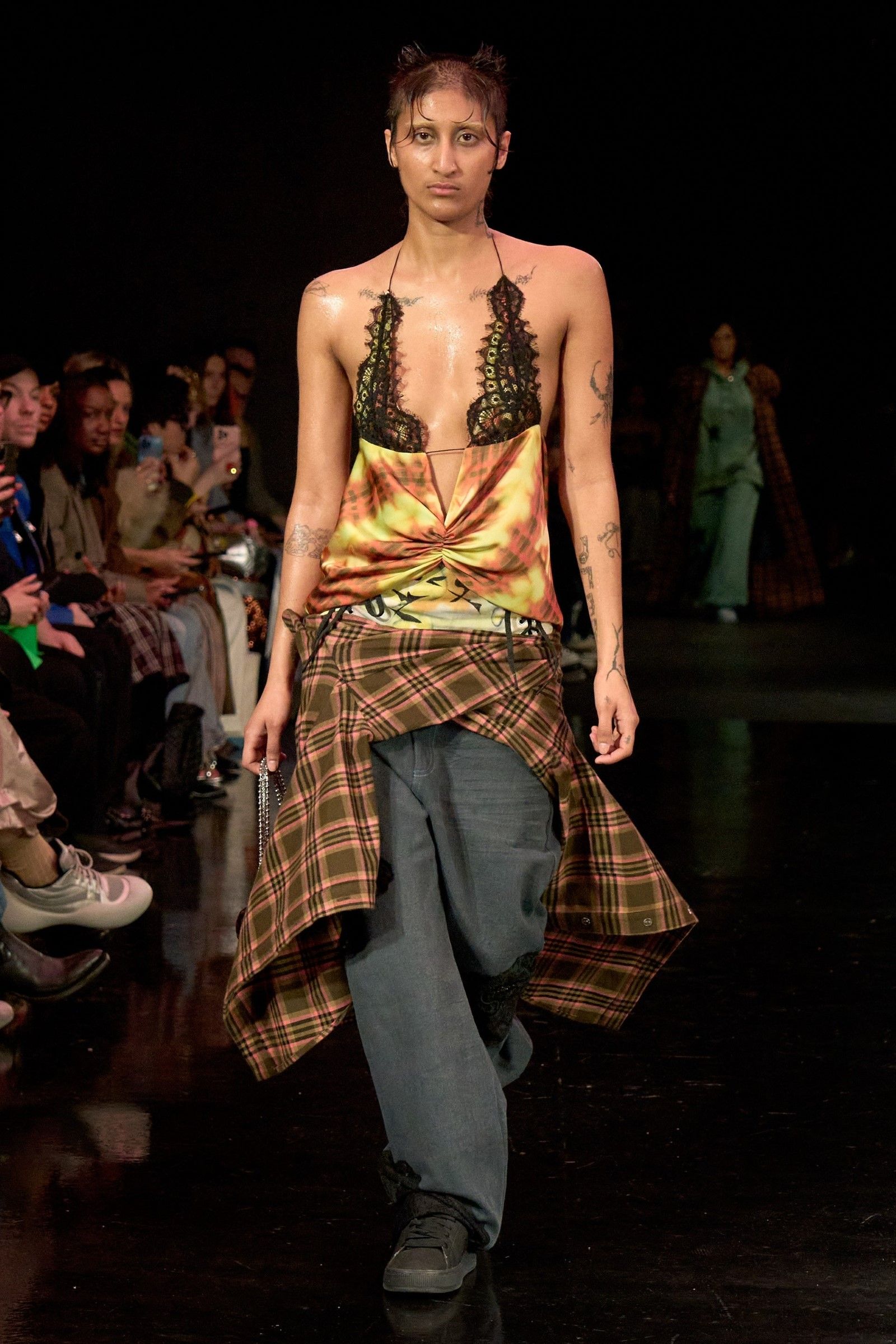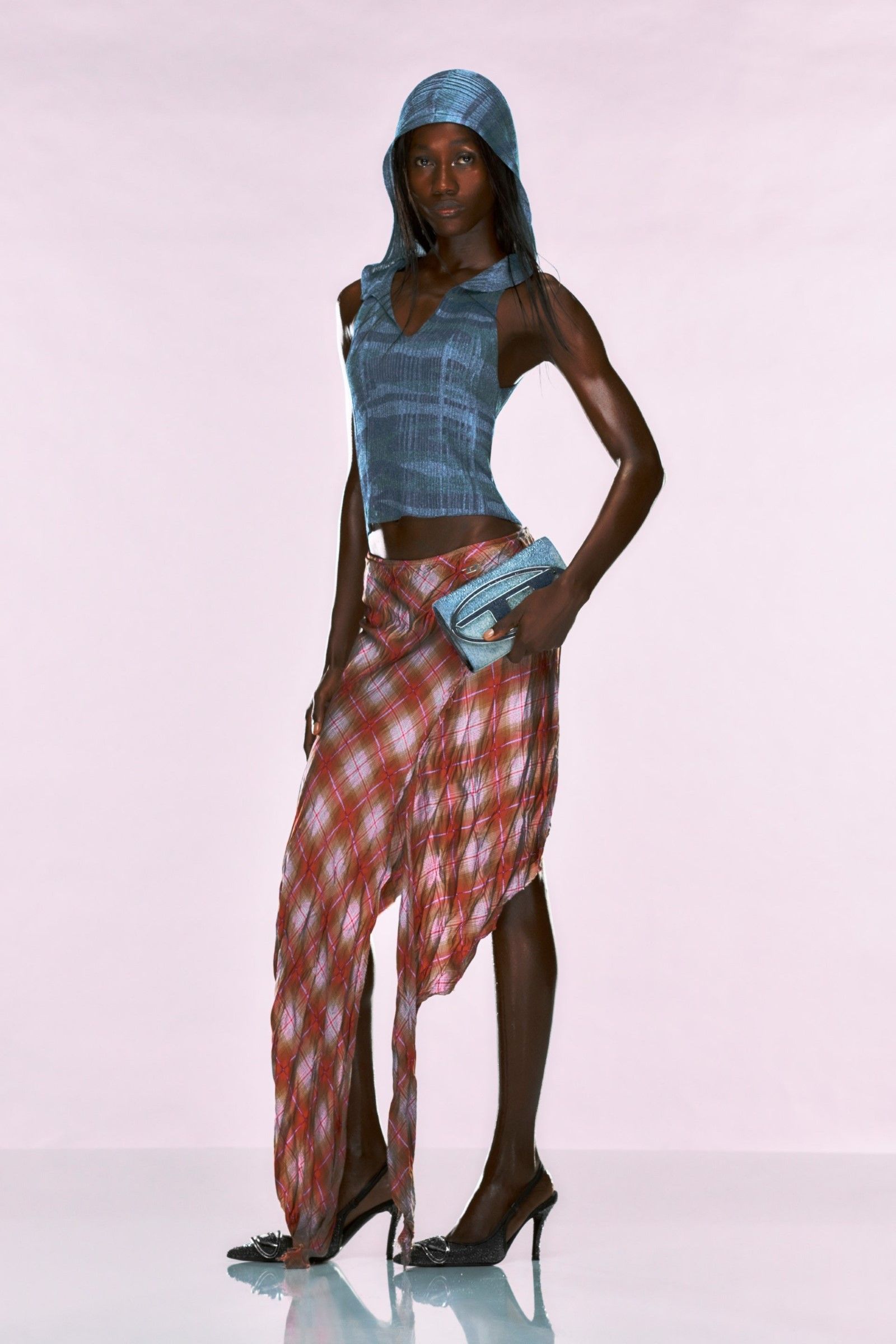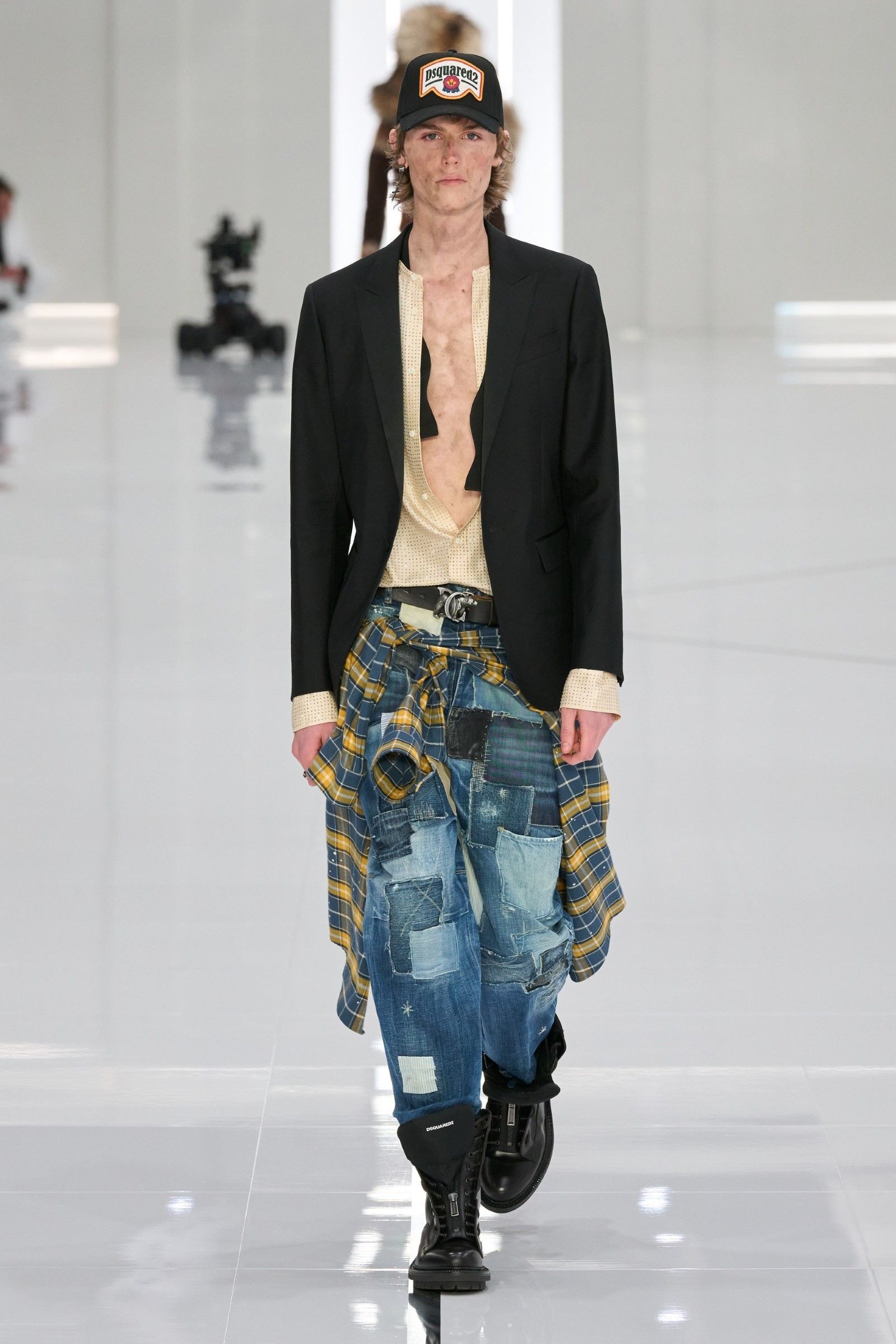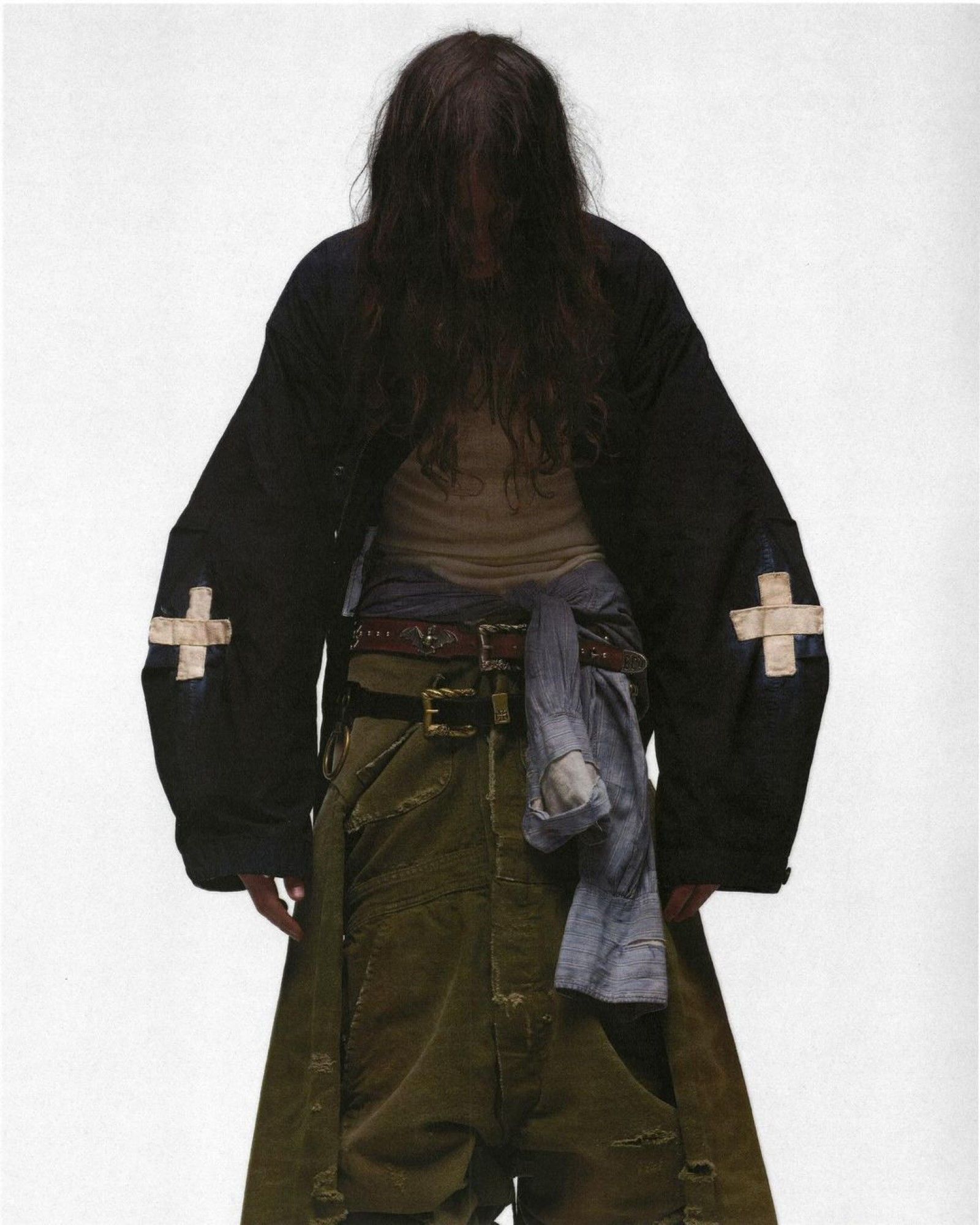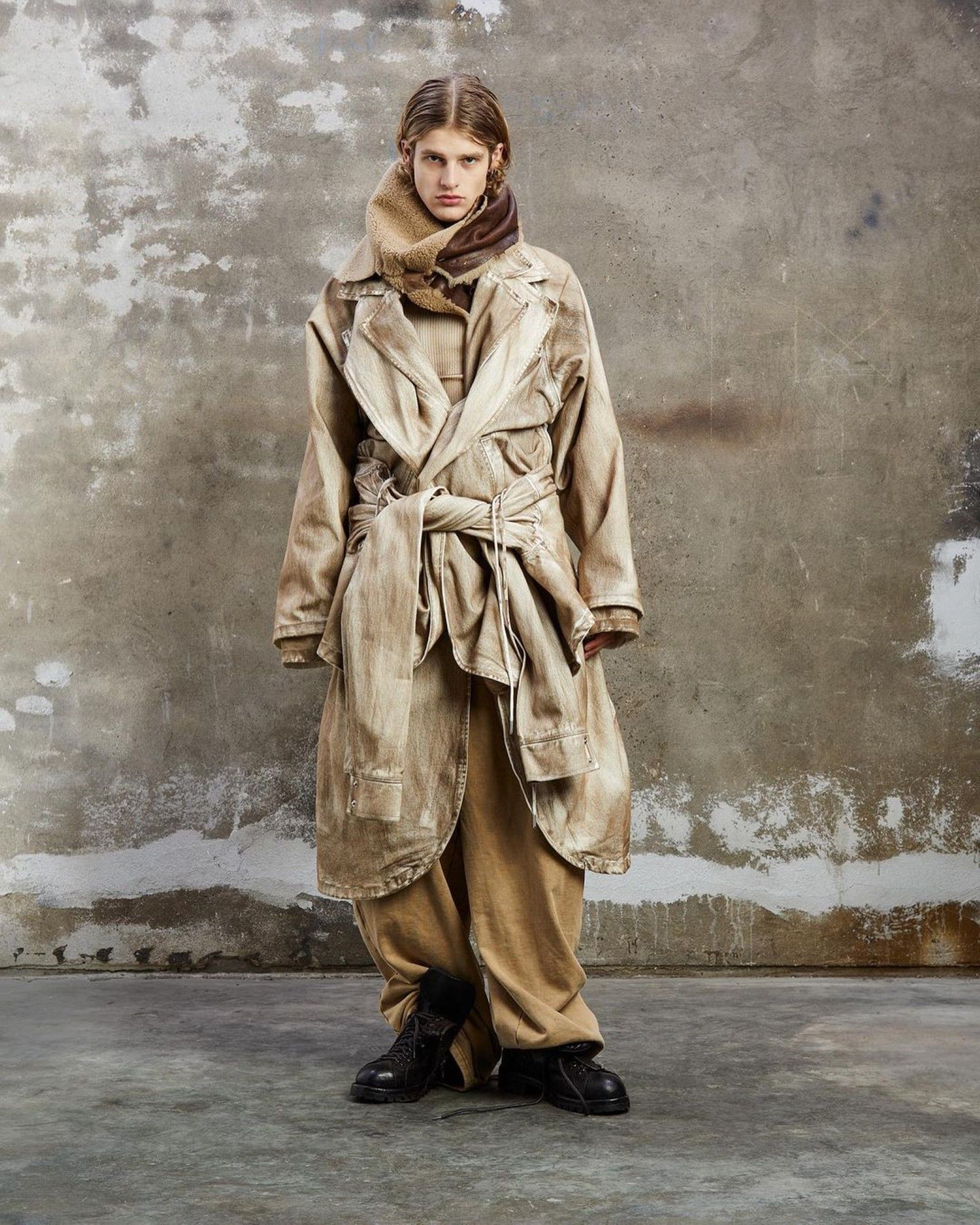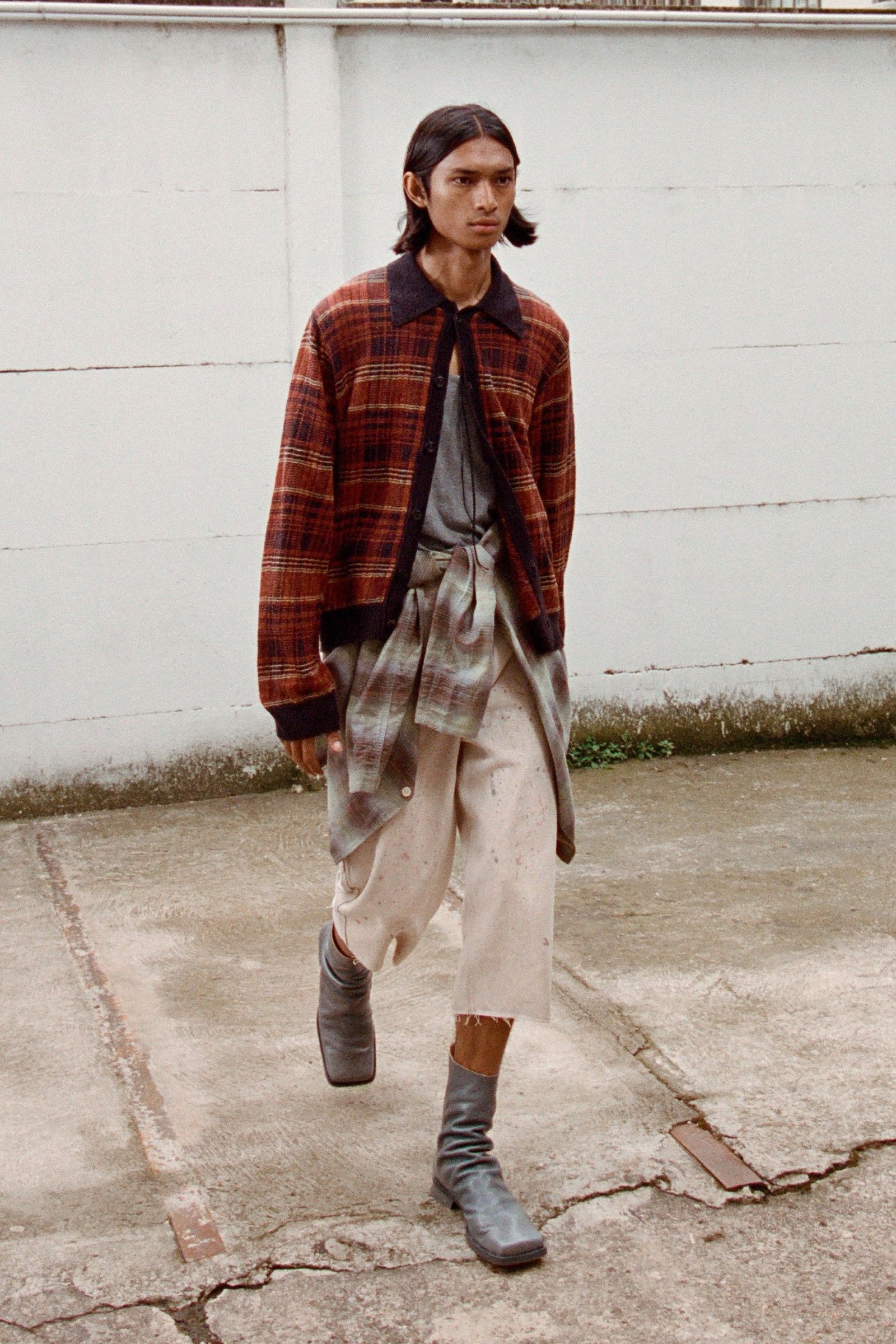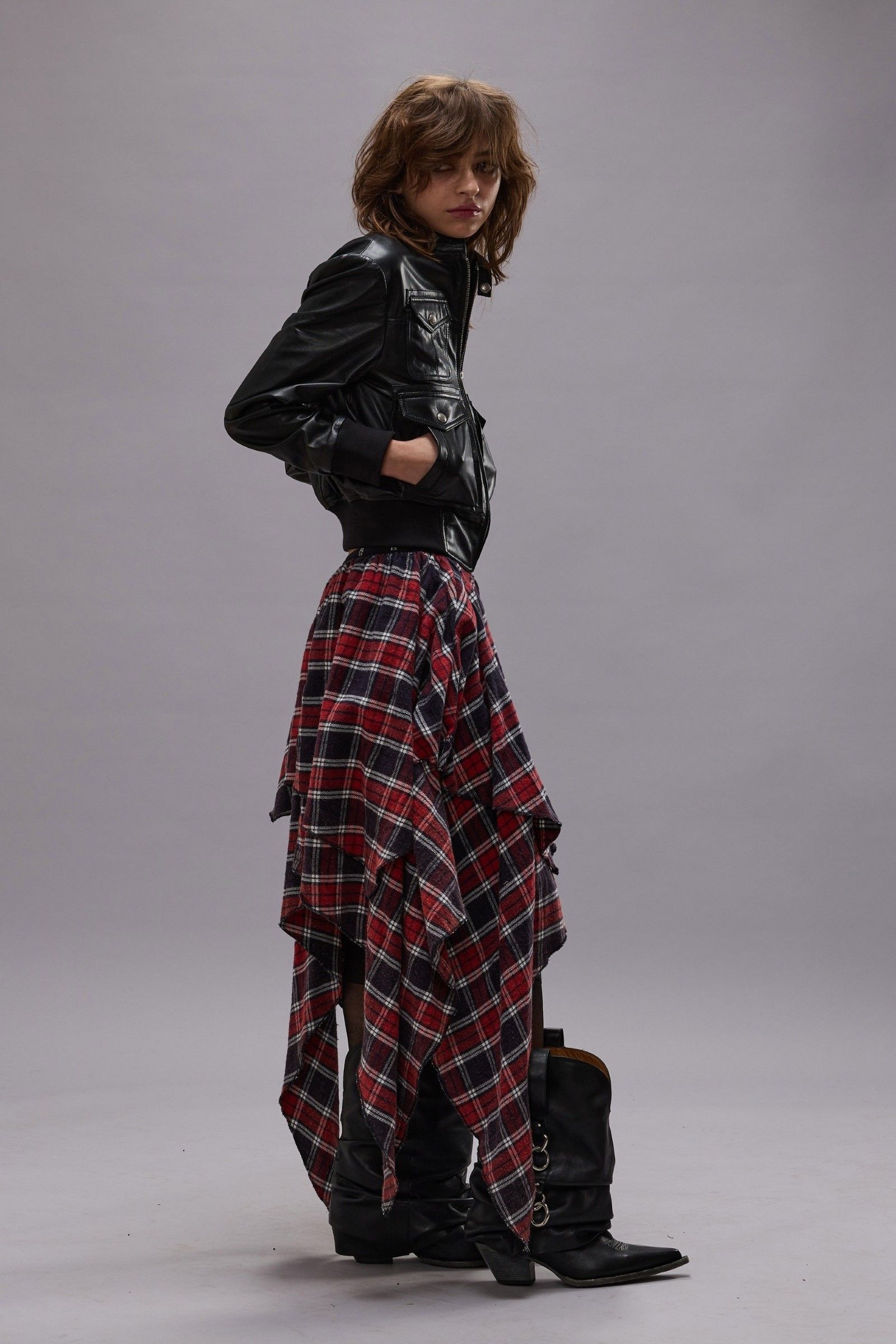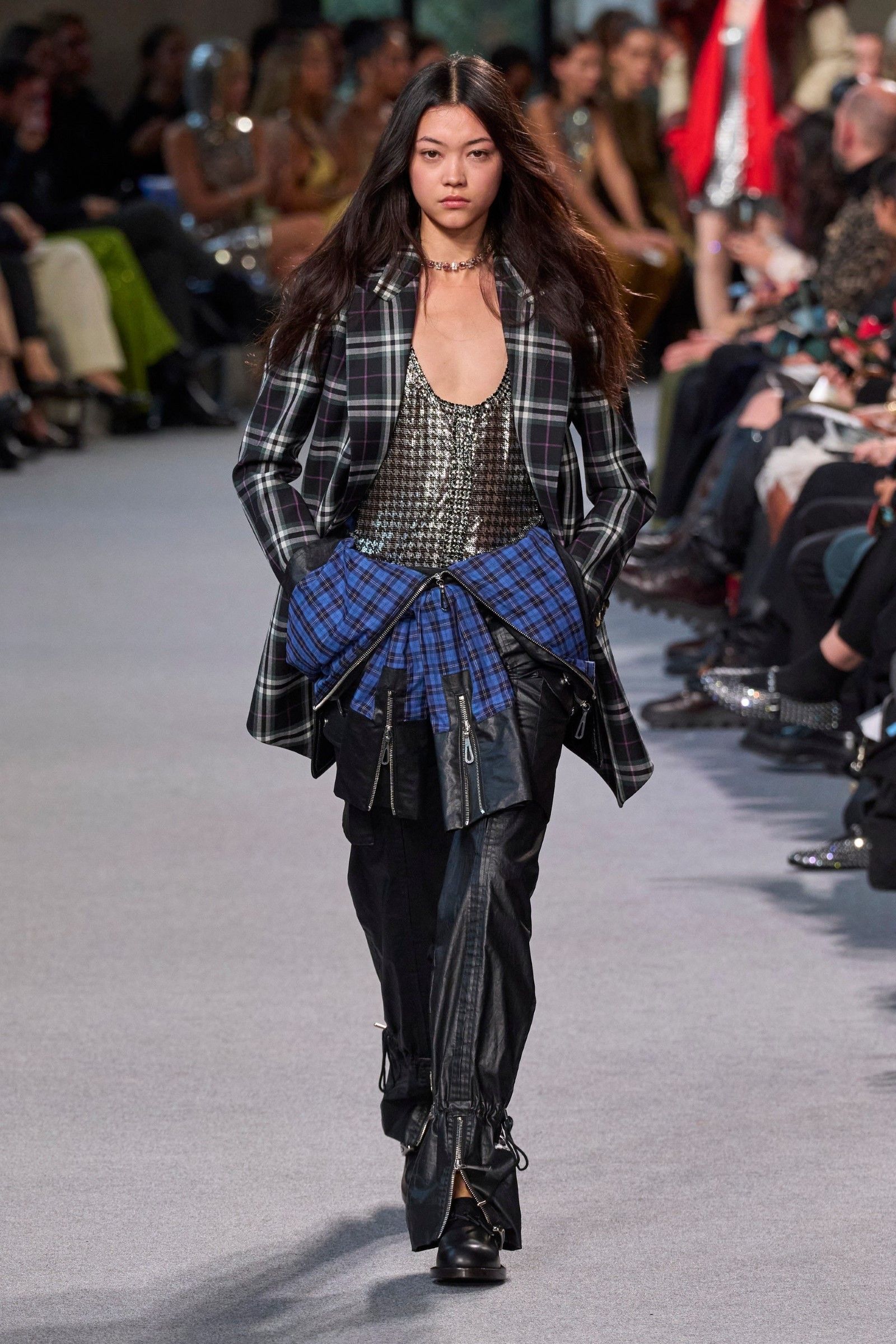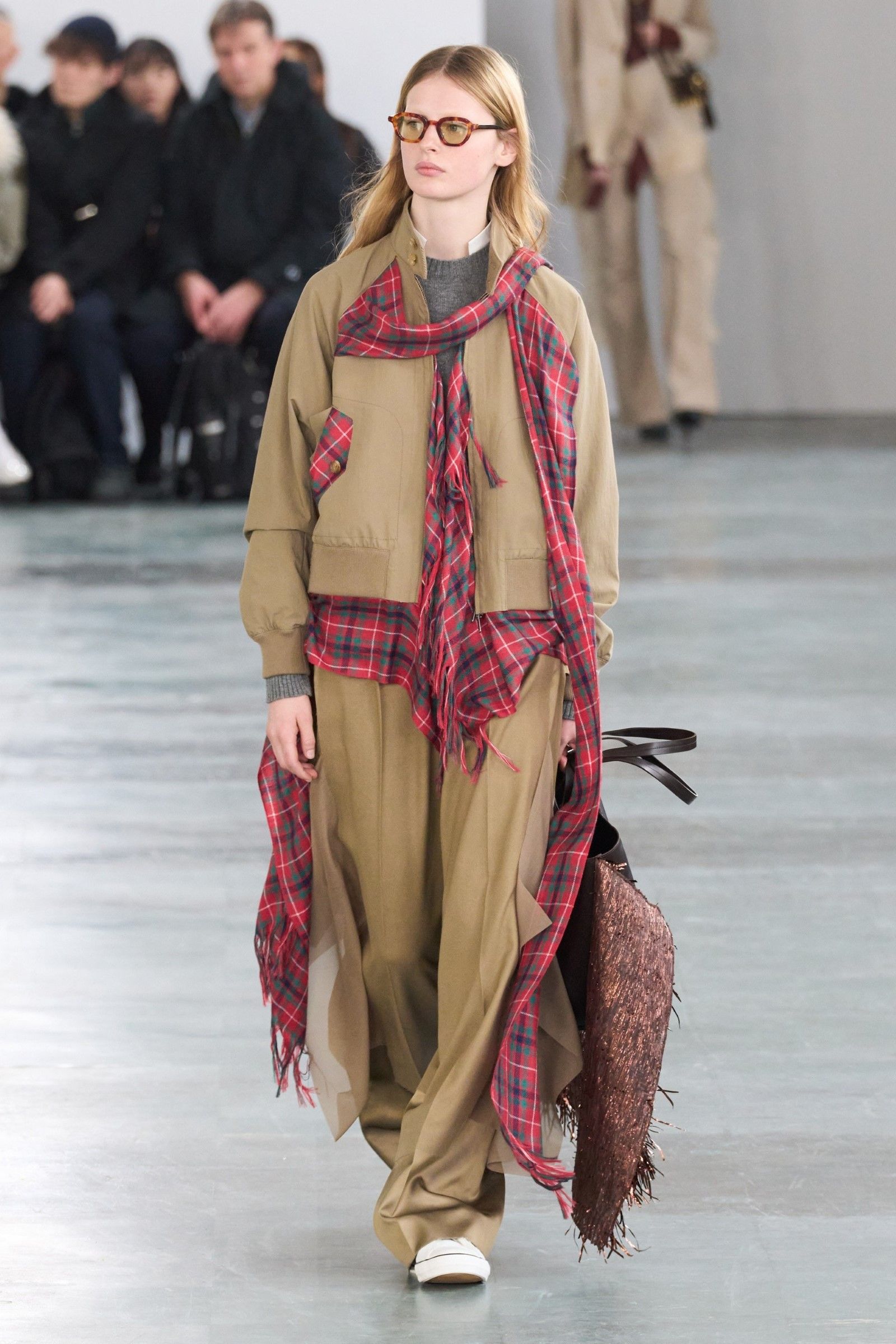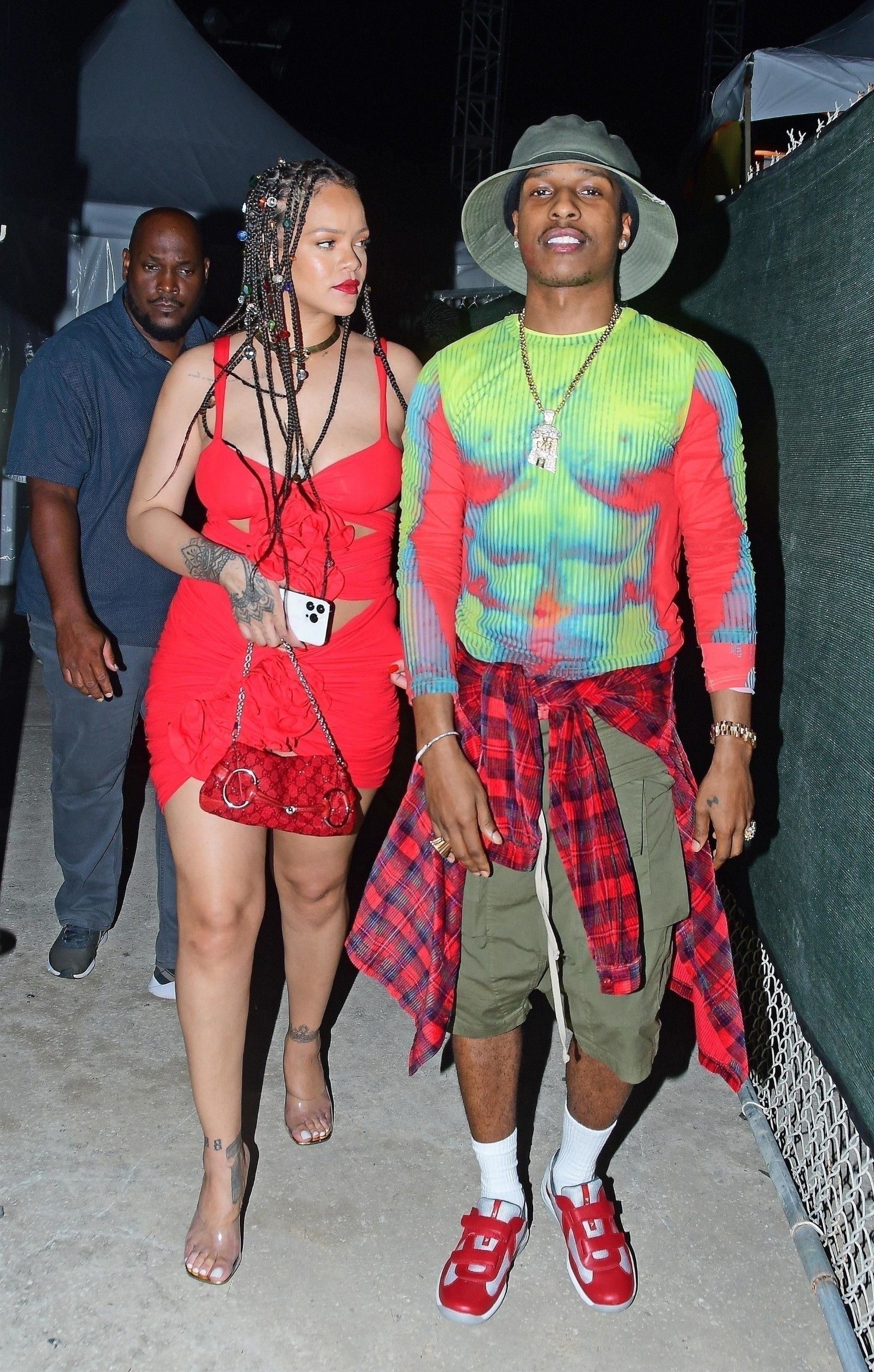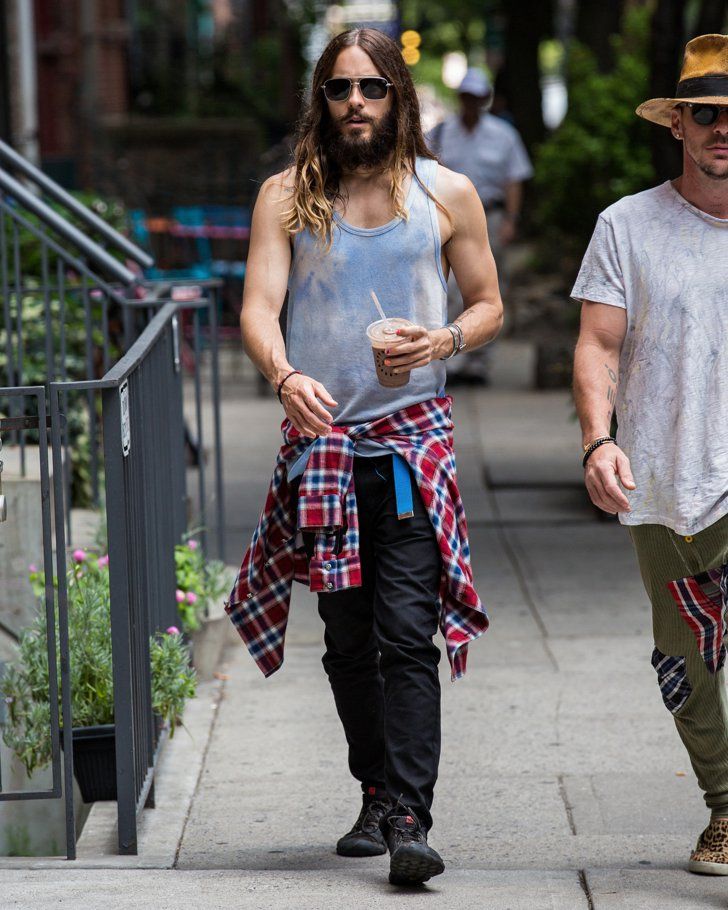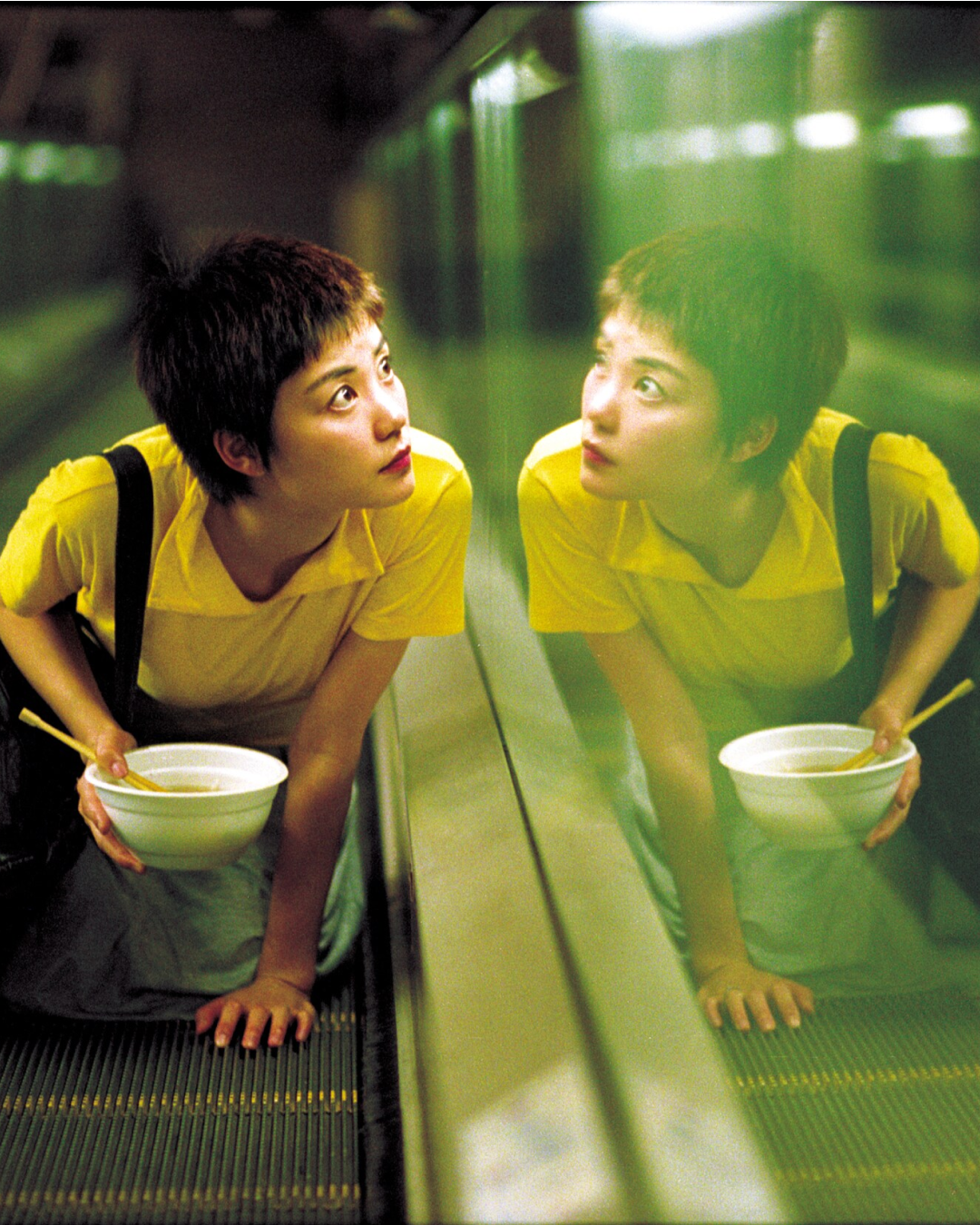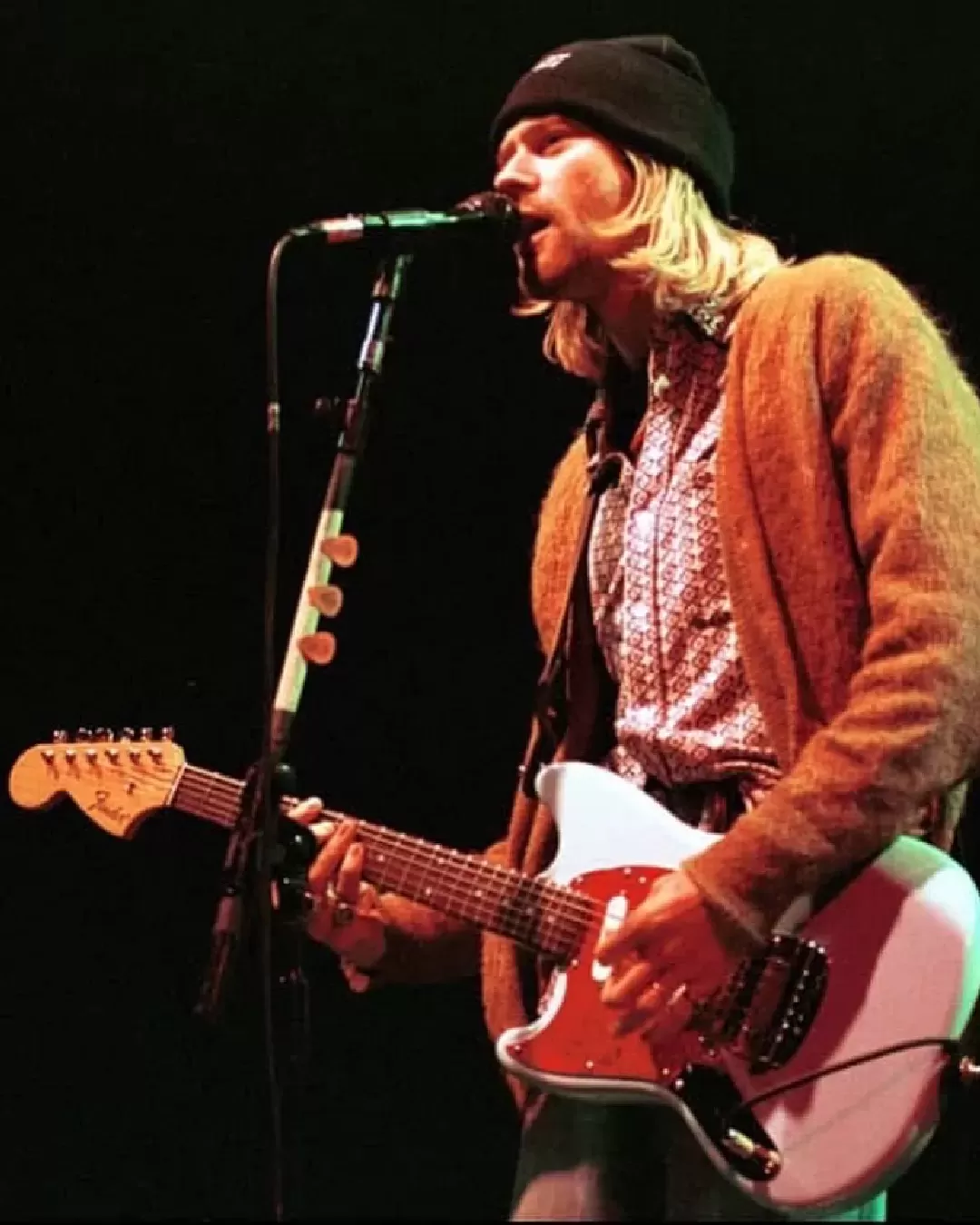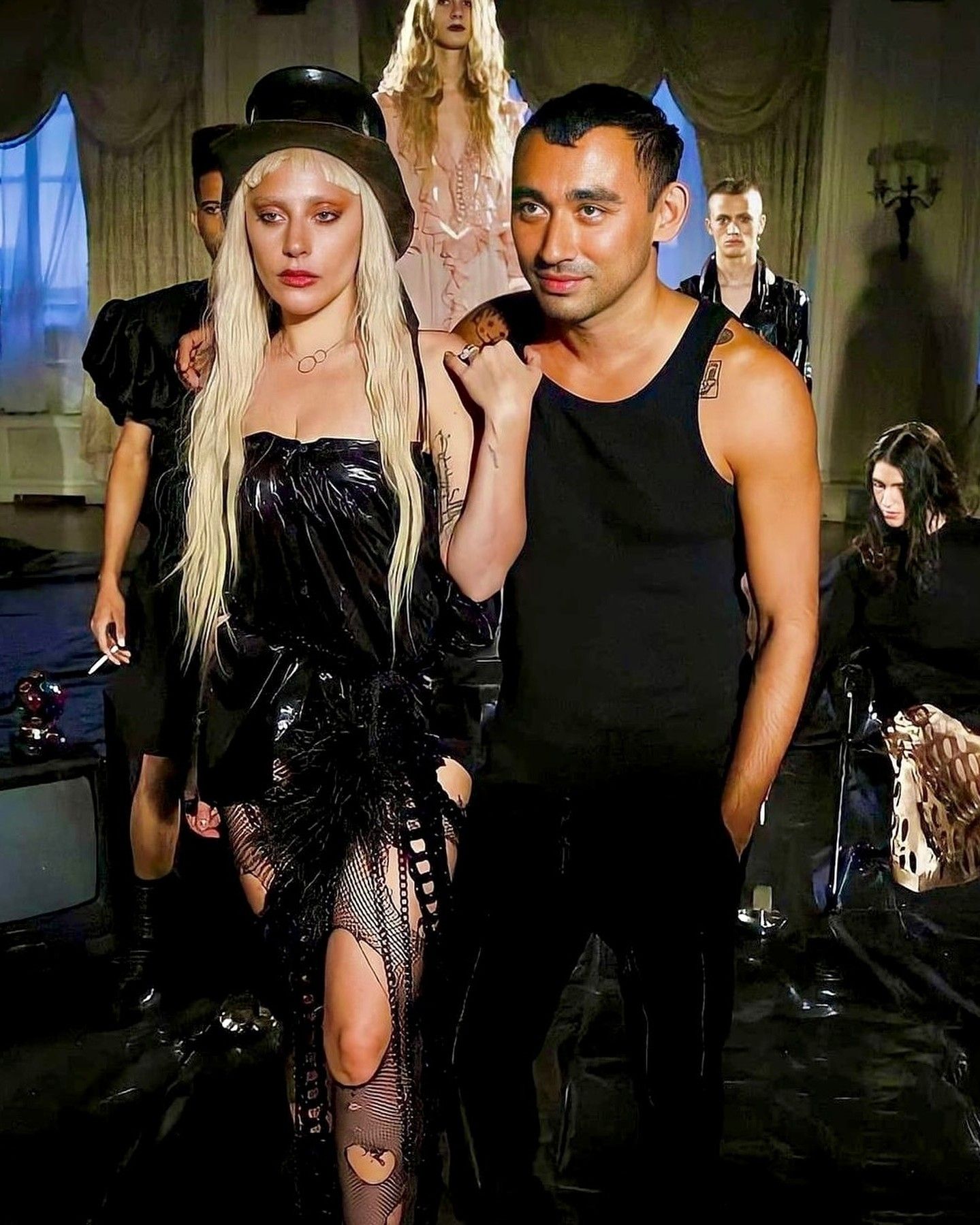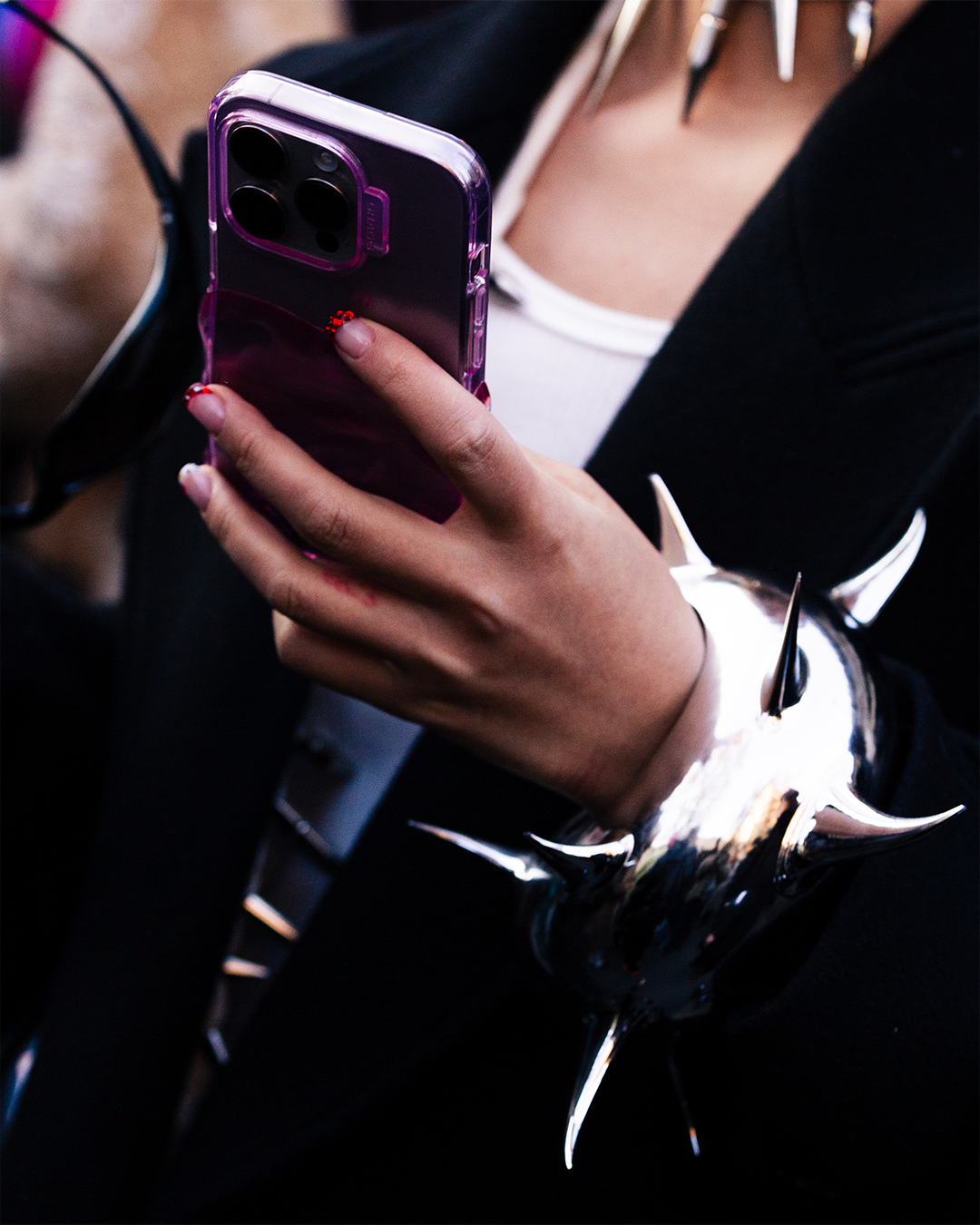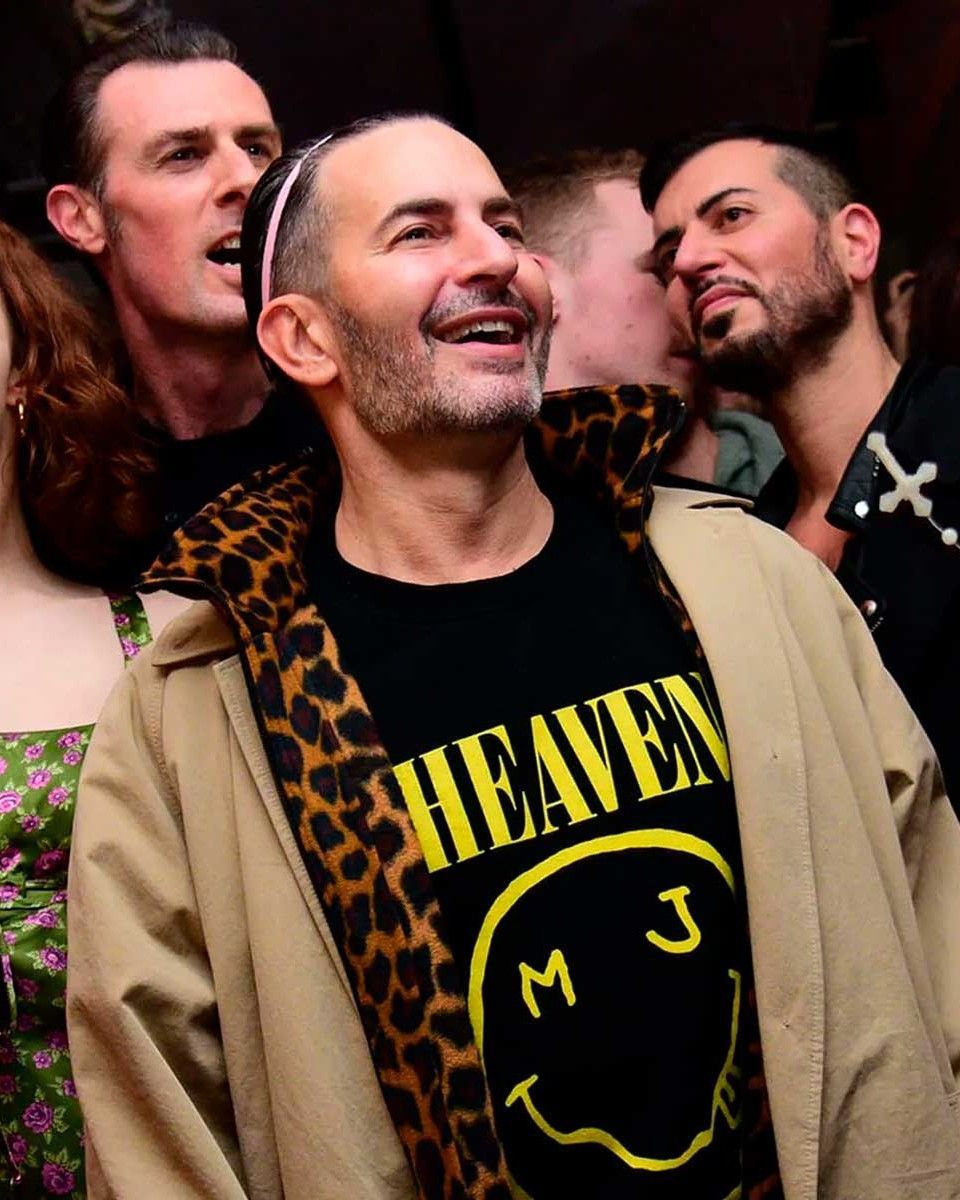
This summer, the shirt should be knotted at the waist How the classic flannel went from clothing to accessory
One of the most successful formats on TikTok recently is the one that shows the difference between “wearing” and “styling”: the first option is the most direct and literal, where clothes are worn as they are; the second includes accessories, shoe and eyewear combinations, hairstyles, and all those details that give personality to an outfit. And one of the areas where this difference has emerged most clearly, both in street style and on the runways of recent seasons, is the classic, common plaid shirt, for which, in addition to the obvious way of “wearing,” a new “styling” solution has been added: tying it around the waist, letting the back hang down from the waist, creating color combinations with the rest of the clothes but also altering the silhouette with what we might define as a sort of mini-train. The interesting thing is that, tied this way, the classic shirt becomes a colorful element and creates an additional level of layering and complexity in the outfit, still managing to convey that idea of rebellion and carelessness. This kind of style, by the way, has the merit of being a very accessible and everyday update to the basic masculine silhouette with volume and draping that, with other clothes and other constructions, perhaps of a drop-crotch pant or an excessively long shirt in the back, we already find in more avant-garde brands such as Rick Owens, Yohji Yamamoto or Maison Margiela.
The most interesting part is that the spread of the trend is so widespread that many designers in past seasons have already flipped it, using the plaid pattern on pieces that resemble the shirt tied around the waist without actually being shirts: from Andreas Kronthaler for Vivienne Westwood there was a sort of wool sash; from Anna Sui it was a kind of skirt-apron to wear over pants; from No Faith Studios there was a coat with additional sleeves to tie at the waist; from Rabanne, Julien Dossena recreated the effect using the checkered lining of a leather jacket turned inside out and tied at the waist; from Diesel, R13, and Facetasm it was a real skirt; while the most ingenious was Jun Takahashi of Undercover, who made long fabric flaps emerge from under a jacket in a trompe-l'œil effect that cited the style but made something completely new of it. More literal are others: from Enfants Riches Déprimés and Our Legacy, to Acne Studios, DSQUARED2, Collina Strada but also Todd Snyder (who not coincidentally presented this styling solution for his collaboration with Woolrich) and Antonio Marras.
Such variety is the result of the very layered history of the plaid shirt. Originally it was the English Royal Stewart Tartan: punks wore it to rebel against the crown, the great Ivy League colleges adopted it to evoke a sense of nobility; thanks to the popularity of Woolrich in the Midwest, the shirt also became a classic of American outdoor wear (the original name of the Beach Boys was The Pendeltons in homage to the Pendleton plaid shirts worn over wetsuits during breaks between waves) and from there it reached grunge superstars like Kurt Cobain and Eddie Vedder, who made it a symbol of the alienated and vaguely nihilistic suburban youth of the '90s; meanwhile, its presence in the subculture of Los Angeles chicanos made it popular among West Coast rappers. From 2000 onwards, it conquered the world thanks to the spread of mall brands like Abercrombie & Fitch and the boom of large fast fashion chains that produce them almost continuously. Since then, the classic flannel has become a great classic of the large and generic distribution of shopping malls, coming back into vogue with the rock revival of Saint Laurent and Givenchy and the fashion renaissance of the hip-hop world that, a decade ago, led Pharrell, Kanye West, and ASAP Rocky to reinterpret the style in one way or another. A decade later, the style is still alive: after all, we live in times where styling is everything.










































